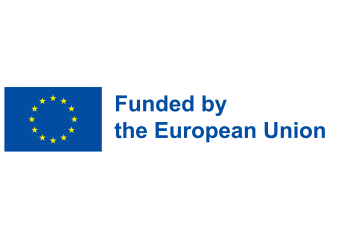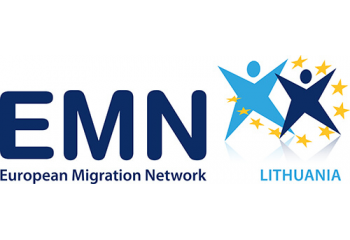News
How governments design migrations strategies?
The European Migration Network (EMN) and the Organisation for Economic Cooperation and Development (OECD) have just published the joint inform ‘Designing migration strategies’, focusing on the development and implementation of migration strategies by governments in EMN Member and Observer Countries, and non-EU OECD countries, highlighting common challenges and good practices. Strategies are divided into six categories: asylum, regular migration, integration, irregular migration, external dimension, and contingency planning. Overarching strategies cover at least three categories, whereas sectoral strategies focus on no more than two.
Different approaches to migration strategies are used across EMN Member and Observer Countries. At least one migration strategy exists in 22 EMN Member Countries and three EMN Observer Countries (AT, BE, BG, CY, CZ, DE, EE, EL, ES, FI, FR, HR, IE, IT, LT, LU, LV, NL, PL, PT, SI, SK, GE, UA, RS). Of these 22 EMN Member Countries, some have both overarching and sector-specific strategies (AT, BG, CZ, EE, FR, IT, LT, PL, PT, SI, SK), while others only have sector-specific strategies (BE, CY, DE, EL, ES, FI, HR, IE, LU, LV). One country indicated that all national sectoral strategies are contained within its overarching asylum and migration strategy (NL). All three EMN Observer Countries (GE, UA, RS) who responded to the study, have overarching strategies, while three EMN Member Countries have no strategy at all (HU, MT, SE).
The primary focus in EMN Member Countries overarching or sectoral migration strategies is irregular migration, followed by efforts in integration, regular migration, asylum, contingency planning, and the external dimension of migration. EMN Observer Countries mostly addressed regular migration, integration, and asylum alongside irregular migration.
Various public bodies are tasked with developing overarching strategies in the EMN Member Countries, with the Ministry of the Interior being most often responsible for migration strategies (CZ, EE, FR, IT, LT, PL, SI, SK). Stakeholders like local government, the private sector etc. are also involved in setting overarching strategy objectives (AT, BG, CZ, EE, LT, PL, PT, SI, SK).
Migration strategies are often linked with other policies, both national and international (AT, BG, CY, CZ, EE, EL, FI, FR, IE, IT, LT, LU, NL, LV, PL, PT, SI, SK, GE, UA, RS). For instance, Estonia linked its overarching migration strategy to broader national strategies such as its Welfare Development Plan and its Cohesive Estonia Strategy. On an international level, Greece aligns its integration strategy with the EU Action Plan on Integration and Inclusion.
Methods to implement migration strategies vary and depend on the type and scope of the strategy. Eight EMN Member Countries and two Observer Countries utilise annual action or implementation plans (BE, BG, FI, FR, HR, PL, LT, SK). Other methods include calls for projects, legislative procedures, cooperation with civil society and international organisations etc.
Dissemination of migration strategies to the public and interest groups takes place in various ways. Some countries have formal communication strategies (BG, CY, CZ, IE, LU, LV), others use events to communicate with stakeholders e.g. via live events (EE, FR, IT, LT, PL, PT, SK). Putting strategies online is a method used by 15 EMN Member Countries and Georgia (AT, BG, CZ, DE, EL, FI, FR, HR, IE, IT, LT, LU, PL, PT, SK).
Monitoring the implementation of strategies is carried out by many EMN Member Countries, typically by the authority that developed it (BE, BG, CY, CZ, EE, EL, FI, FR, HR, IE, IT, LT, LU, LV, NL, PL, PT, SK). Several countries have mechanisms in place to update their strategies (AT, CY, EE, EL, FI, FR, LT, LU, LV, PL, PT, SI, SK), for instance, linking updates to their monitoring and evaluation processes (CY, EE, FR, LT, LU).
Limited input from target groups is one of the challenges faced by EMN Member Countries in developing their strategies (FR, IE, IT, LT, PT, SI, SK), while changing migratory contexts can be an obstacle to implementation (CY, CZ, EE, FR, IE, IT, LV, PT, SK).
Good practices were identified in the development (BG, CY, CZ, EE, FR, IE, IT, LT, LV, PT, SI) and implementation (CY, CZ, EL, FR, IE, IT, LT, LV, PT) of migration strategies, including inter-ministerial coordination, inclusive consultation processes, and the establishment of new structures to better integrate and protect migrants and diaspora groups.
In non-EU OECD countries like Australia, Canada, and New Zealand, national migration strategies are used to set migration targets while others focus on general policy direction without specific targets. Japan and South Korea emphasise legislative reforms and migration management in their five-year plans. Canada's 2023 migration strategy review, which included extensive consultations, serves as a good example of how to update national strategies.
Link:EMN Inform (EN)



